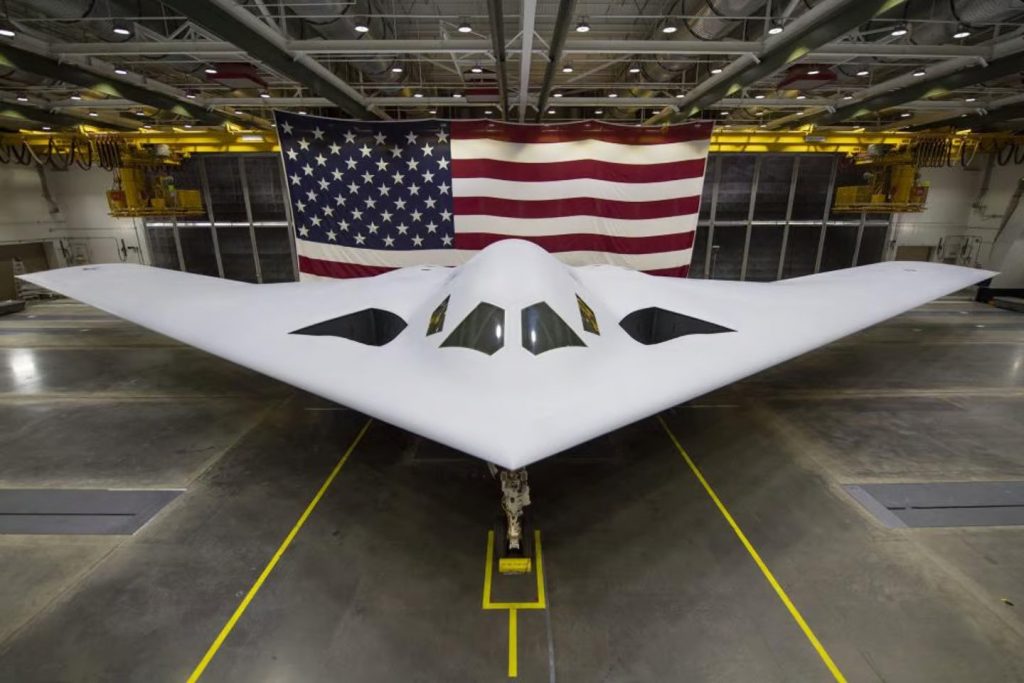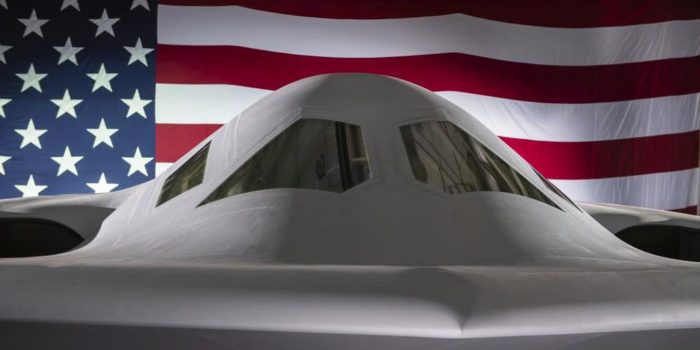The US Air Force has provided new insights into the design and capabilities of the highly classified B-21 Raider nuclear stealth bomber ahead of its first flight later this year. The Air Force has released two new images of the aircraft, one featuring a close-up of its canopy and the other a full shot from a higher angle.
These images offer clues about the aircraft’s design, which remains tightly guarded, with even its dimensions being a secret.

The B-21 Raider is designed with unprecedented range, enabling it to carry out long-range missions from US territory without the need for forward bases and with little need for in-flight refueling.
This range is so extensive that the Australian government has been advised to purchase the B-21 to operate from secure bases in the south of the country and strike distant targets with conventional weapons.
Aside from long-range strike missions, the B-21 can also be used for Intelligence, Surveillance, and Reconnaissance (ISR) missions, electronic attacks, communications, and other functions.
Additionally, it has a high degree of autonomy and AI that allows it to operate without a crew and function as a control platform for drone swarms.
Previously, the B-21 was revealed in an invitation-only event on December 2, 2022, with only one image released to the public. However, the Air Force has now released two more images taken at the same time as the first, offering further insights into the highly classified aircraft.
Confirming the evolution of the B-2 Spirit bomber, the new images reveal the B-21’s radical advances in stealth technology. The grayish-white color of the radar-absorbent composite coating is reported to be more effective and less fragile than the old coating.
The close-up image shows the composite coating looking more woven than assembled, with layers added like tape, covering all the joins and seams around the cockpit windows. The windows have a more curved shape than those on the B-2, resulting in better scattering of reflected radar signals for added stealth.
The upper angle image reveals that the composite coating extends to the engine inlets, which are lower and contoured rather than sharply geometric, resulting in a smoother blended wing and fuselage. The engine nacelle is recessed well back from the inlet to reduce heat signature, and the nacelle fits more seamlessly into the body.
Inside the inlet is a removable inlet cover that was previously thought to be part of the engine structure. The tail structure seems to be more integrated into the wing and body, and there are some flat geometric structures at the rear of the engines that could be some sort of port or satellite data link antenna arrays.
The Air Force plans to acquire at least 100 B-21s, with the first expected to enter service in 2027. The aircraft will replace the B-1B Lancer and B-2 Spirit bombers by 2040 and eventually the B-52 Stratofortress in the 2050s.


